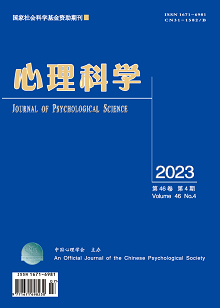|
|
Media Multitasking Affects Cognitive Control: Evidences for Scattered Attention Hypothesis
Kong Fanchang, Xia Yujuan, Liu Zhaojun, Wang Meiru, Li Xiaoyao
2023, 46(4):
865-872.
DOI: 10.16719/j.cnki.1671-6981.202304013
Media multitasking is prevalent for young adults, and can significantly affect one's cognitive control. Cognitive control refers to a series of top-down mental processes in which individuals have to pay attention to a specific task, which consists of three central components: inhibition control, cognitive flexibility, and working memory. To date, there are two contrasting hypotheses with regard to the relation between media multitasking and cognitive control: the scattered attention hypothesis and the trained attention hypothesis. The former argues that adolescents who use frequently several media simultaneously tend to have more attention problems, further leading to impaired cognitive control, while the latter suggests that media multitasking is a training process in which individuals shift their attention frequently from one stream of information to another, and thus exerting a positive effect on cognitive control. Existing studies have not reached a consistent conclusion. According to the comprehensive comparison, the discrepancy in previous studies may be due to the different levels of cognitive control measured by the questionnaire and standardized performance-based tasks. Moreover, little research has examined whether media multitasking affects cognitive control under Chinese cultural background. Thus, This study investigated the relation between media multitasking and cognitive control in real-life and laboratory situations in a sample of Chinese adolescents. Three central components of cognitive control were measured using the questionnaire and standardized performance-based tasks (Change detection task, Number-letter switching task, 2/3-back task for inhibition control, cognitive flexibility, and working memory, respectively).
In study 1, we surveyed 403 undergraduates (300 girls; Mage = 20.37 years, SDage = 2.25 years) with the media use questionnaire and adolescents' executive function scale. The statistical analyses consisted of descriptive statistical analysis, correlation analysis and hierarchical regression analysis. The results showed that media multitasking negatively predicted self-reported inhibition control (β = .23, p < .001), cognitive flexibility (β = .14, p < .01), and working memory (β = .24, p < .001). In study 2, we recruited 66 participants (33 HMMs (heavy media multitaskers), 25 girls, MMMI = 5.17, SDMMI = .51, Mage = 19.61 years, SDage = 1.86 years; 33 LMMs (light media multitaskers), 27 girls, MMMI = 2.06, SDMMI = .34, Mage = 19.55 years, SDage= 1.31 years) from study 1 to complete the change detection task, the number-letter switching task, and the 2/3-back task. Descriptive statistical analysis, repeated-measures ANOVA, and independent-samples T tests were conducted. The results showed that: (1) In Change detection task, the group had the main effect on ACC, F(1, 61) = 5.08, p < .05, ηp2 = .08. The ACC of HMMs ( .79 ± .02) was significantly lower than that of LMMs ( .85 ± .02). (2) In the number-letter switching task, there were no significant differences in switching cost between HMMs and LMMs, t = .23, p > .05. (3) In the 2/3-back task, there were no significant differences in performance between HMMs and LMMs.
These findings support the scattered attention hypothesis, revealing a negative association between frequent media multitasking and cognitive ability in real-life and laboratory situations in Chinese cultural background.
References |
Related Articles |
Metrics
|

